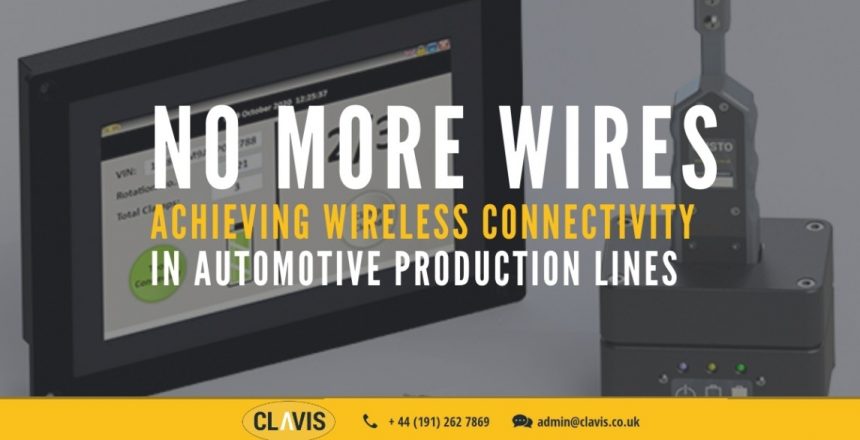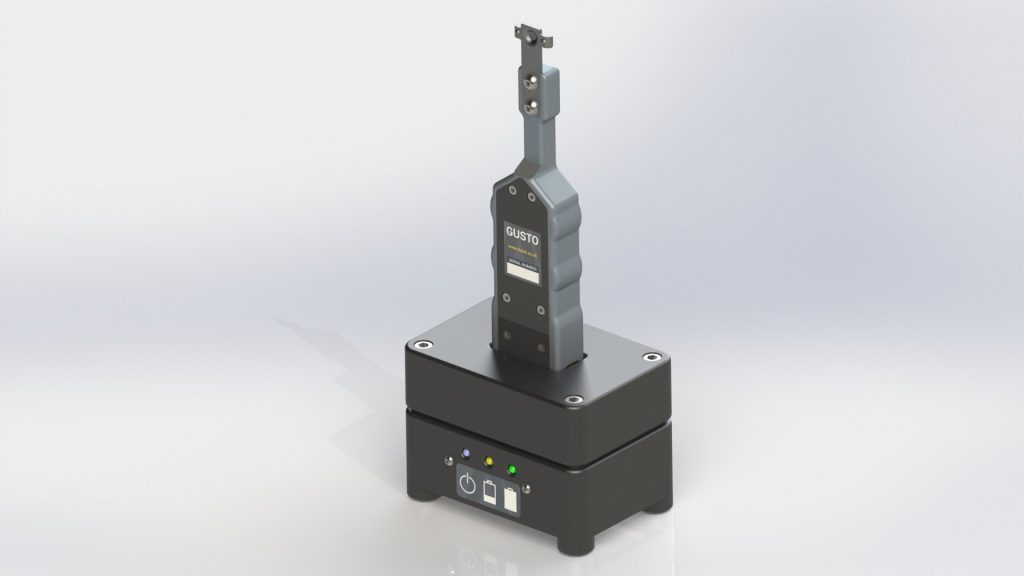Achieving wireless connectivity in automotive production lines
Wires are increasingly a thing of the past. Wired connections in handheld tools have long been known to disrupt the work of industrial operators — including reduced efficiency and being unable to pinpoint connection errors. Clavis’ customers face these issues when securing clamps and setting belt tension in their automotive production lines. Here, I explain why wireless connectivity is becoming more essential, and how you can achieve it.
Most automotive production lines rely on the use of handheld devices in environments where space is restricted. Accessibility constraints and a lack of manoeuvrability can make it difficult to operate wired tools.
Let’s take the opening or closing of pre-opened-pre-positioned (POPP) clamps as an example. POPP clamps within vehicles must be ‘snapped’ closed to ensure a leak-proof connection between hoses and fittings. Failure to secure these clamps properly can cause hoses to disconnect, thus oil or water leakages.
What’s more, these clamps are usually located in restricted and difficult-to-reach spaces — down below or high above. This makes it difficult to manoeuvre and use tools in ways that ensure the job is done properly.
Thankfully, there’s an alternative — and cost-effective — option that could remove those pesky wires for good.
Trust in traceability
Operators need tools they can trust. With a wired tool, it can be extremely difficult to pinpointing where, or why, the connection was lost. Time and money then have to be spent reassessing the wired system.
This is where wireless tools are advantageous. Any communication problem can be easily looked after and fixed. Furthermore, re-positioning of the tool can be done much faster compared to wired tools. Finally, fast communication speeds allow for fast data logging.
Data logging is where an electronic device records data over time with a built-in sensor, or through external instruments and sensors. The operator can revert back to the individual data points and visually see whether a process has been completed, or to help pinpoint any problem.
This is especially handy when removing or affixing POPP clamps. Not only does Clavis’ Gusto POPP tool ensure clamps are successfully closed — and can do so within 0.3 seconds — but the tool also records the vibrations as the clamps shut.
Almost instantly, it is possible record whether the clamp has been properly shut. The amount of data used in the process is minimal, yet highly important as the process of closing a POPP clamp can be performed only once. This also means the process of closing the POPP clamps only needs to be performed once.
Let’s put this into perspective, using the example of an automotive production line. Clavis’ Gusto tool has been shown to release around 2000 clamps per day, which is about three clamps per vehicle, and releases each clamp within 0.3 seconds. This requires that the tool sends a stream of data within that short time range.
For this, operators need a reliable communication protocol between the tool and the receiver. The Gusto tool uses a quick and robust protocols, (Dual way radio frequency or IEEE 802.11), which allows the operator to receive a variety of information, including raw data of the tool’s vibrations through a receiver. The receiver features a ‘tool-present’ LED light, which indicates there is a secure radio link both to and from the Gusto tool.
The result is a secure, and trustworthy error-proofing output which connects to the plant’s quality computer system. This provides full traceability of each clamp set by the Gusto.
Never miss the point
We’ve talked about how wireless handheld devices manage smaller volumes of data when releasing POPP clamps. But wireless connectivity is also required when operators need to record higher data volumes.
An example of this is when measuring the tolerance of a handbrake. Again, handbrake setting requires the use of a series of data points over a constant period. Generally, setting a handbrake can be broken down into three stages: energising the brakes, unwinding the brakes and winding them into the correct position.
In comparison to closing POPP clamps, the importance of data during the handbrake setting process is much lower, as there are multiple data points throughout the stages to take data from. In fact, by using one way communication from the tool to the receiver, Clavis’ handbrake measuring equipment ensures operators receive data points through each stage of this process. Therefore, if a data point is missed, the system still functions correctly as the process is much slower compared to the transmission data rate.
Plug and play
Another advantage of wireless tools is that they are easier to install — huge amounts of time can be saved that would normally be spent configuring wires.
When installing a wired tool, the wires must be connected to the operator’s system. This installation process needs to be done again in case of a rebalance — which is the changing of process from one station to another — and the wires must be taken out of the current area, before setting them up again in the next station.
This takes up time and costs that can be avoided by going wireless. Instead, wireless devices have a plug and play capability, which means they are designed to work perfectly when first used or connected without needing reconfiguration or adjustment by the user. We’re always exploring the potential of wireless devices, here at Clavis. That includes wireless unit mounting plates for use with belt tension measurement systems, and our Gedore wireless breaking torque wrench system.
These are just a handful of reasons why wires are increasingly becoming a thing of the past. To stay up to date, automotive engineers must transition to wireless connectivity. Get in touch with me today for a consultation on how you can reap the benefits of being wire-free with Clavis’ handheld tools.
Article by Pavlos Sgardelis



